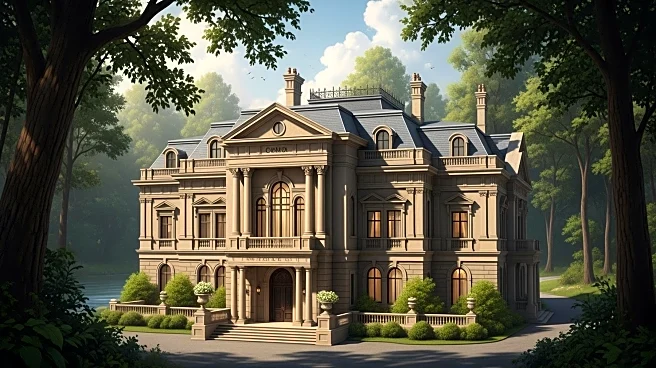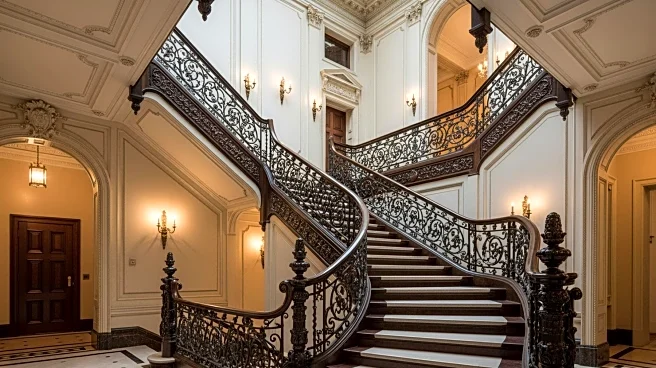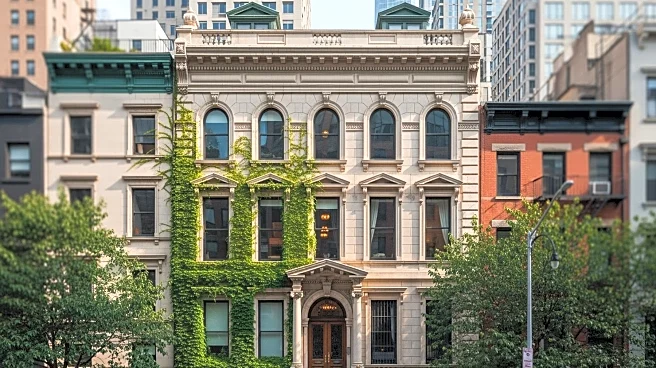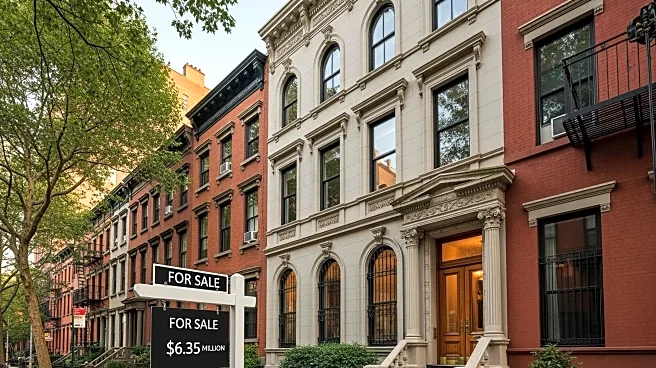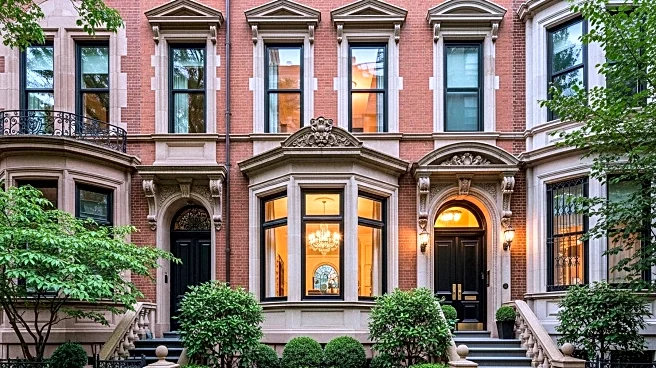What's Happening?
The River Forest mansion, once owned by the late Chicago Outfit boss Anthony 'Big Tuna' Accardo, has been listed for sale at $5 million. This Tudor-style mansion, built in 1930, was home to Accardo and
his wife from 1951 to 1963. The property, known for its opulence, includes features such as a custom tiled indoor pool, a two-lane bowling alley, Mexican onyx baths, and an English pub. The mansion is currently listed in a private, agents-only network, with the potential to set a record for the highest sale price in River Forest. The mansion's historical significance is tied to its former owner, Accardo, who was a prominent figure in the Chicago Outfit during the 1950s and early 1960s.
Why It's Important?
The listing of the Accardo mansion highlights the enduring fascination with properties linked to historical figures in organized crime. Such properties often attract attention due to their unique architectural features and storied pasts. The potential sale of this mansion at a record price underscores the high value placed on real estate with historical significance. It also reflects the ongoing interest in the legacy of the Chicago Outfit and its impact on the cultural and historical landscape of the region. The sale could influence property values in River Forest and contribute to the area's reputation for luxury real estate.
What's Next?
If the mansion sells for its asking price, it will set a new record for residential property sales in River Forest. This could lead to increased interest in other historically significant properties in the area, potentially driving up real estate prices. The sale may also prompt further exploration of the history of the Chicago Outfit and its influence on local real estate. Real estate agents and historians may continue to capitalize on the allure of properties with connections to organized crime figures, using them as unique selling points.
Beyond the Headlines
The sale of the Accardo mansion may spark discussions about the ethical implications of profiting from properties linked to criminal figures. It raises questions about how society views and values the legacy of organized crime, and whether such properties should be preserved as historical landmarks or treated as regular real estate transactions. The mansion's opulence and unique features also highlight the cultural impact of wealth and power associated with organized crime during its heyday.
